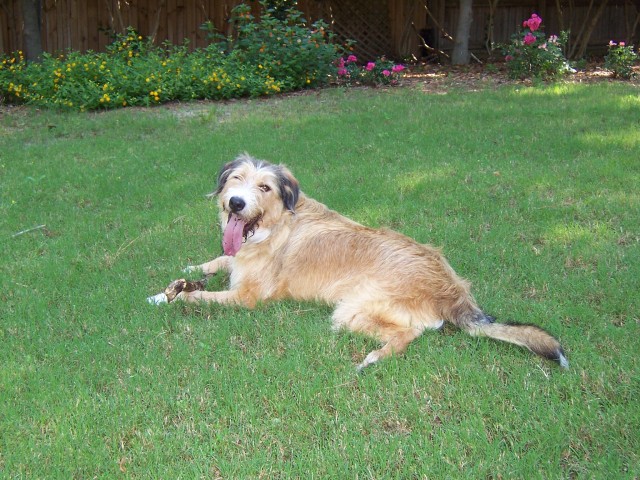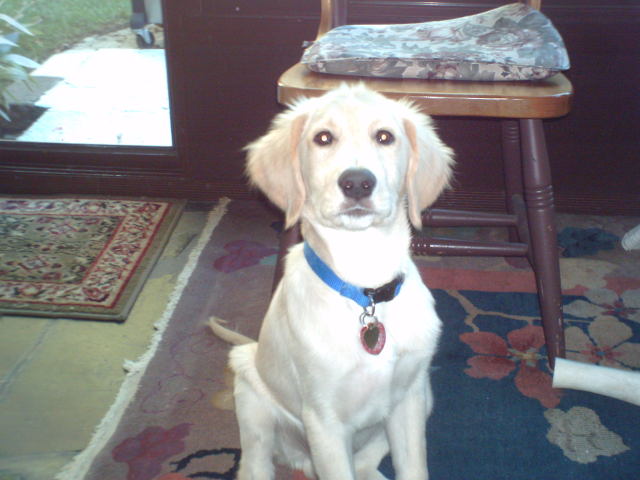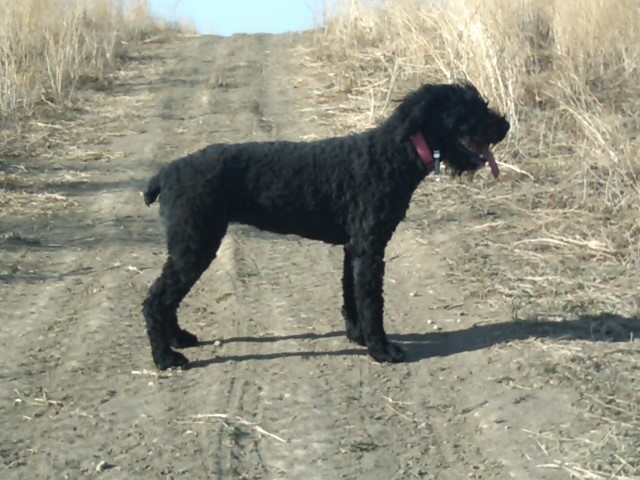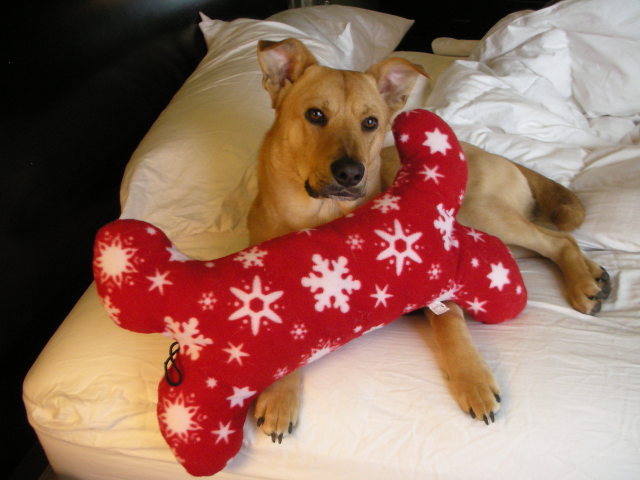QuestionQUESTION: My 5 yr old pointer/lab mix Brewskie is a dominant dog, and I have been working with him very closely to re-establish that I am the pack leader so that I have complete verbal control in case a situation presents itself due to a change in behavior. Over a year ago Brew was attacked by another dog and hasn't been the same since... and neither have I which I am sure he is sensing. Since he has shown aggression towards other dogs which he never had before. The aggression is not consistent though, he is either great with other dogs or he's not. There is no specific trigger that I can pin point either. I believe it could be for the following reasons, fear, dominance, territorial, protection, or bc he is sensing that I am nervous. I have been and will continue to work with him so that I feel more comfortable, as well as him and to have complete verbal control regardless of the situation. However, I still cant completely trust that he will not be aggressive if he comes in contact with another dog regardless of the situation. (issue #1)
My boyfriend recently got a bull dog puppy, she is almost a year old now though. They get along very well, but over the past few months that he's had her there has been times (maybe 3 times now) where brew has snapped/growled/snarled at her. It is a quick thing... not like a fight, almost as if he is yelling at her. I think this is more of the older dog setting boundaries rather than him wanting to hurt her, bc I can trust that he does not feel threatened by her. Also, my boyfriend has over reacted ever time and screamed/yelled everytime in her defense not acknowledging that his dog may be doing something wrong. What are your thoughts? Should we punish just him? What type of punishment would you recommend? Or the best way to handle this? (issue #2)
Here is my main question... I know and have read how to establish the dominant dog when you are living together, but I don't know what to do in my situation bc my boyfriend and I don't live together yet.
At my house, Brew is the only dog, and at my boyfriends house Francis is the only dog, and they are both very spoiled by us. Therefore, that would lead me to think that both of them feel dominant of their own house. I want to make sure as pack leaders the best way to set up this environment for them due to our circumstance. Currently, it seems that Francis is allowing Brew to be the dominant dog, but we do not have any structure set up during their visits. (Ex: Brew doesn't always go out the door first, food bowl is out for Francis, but not brew)
My boyfriend and I stay at each others house frequently (mostly at his) and we bring our dogs to each others house too. I want to do this correctly so that we are in control, and also in preparation for if and when we move in together. IS there a certain way to build a structure environment for both dogs in both houses?
I truly appreciate your willingness to donate your time and expertise to this site. Thank you so much!
ANSWER: Your dog is not demonstrating dominance toward other dogs, it's most likely fear. And that incident of injury made it worse. There are ways to rehabilitate a dog's fear aggression toward other dogs on leash and they work quite well. If you'd like to pursue that following your execution of the prescription I give below, please repost.
Why you consider him "dominant" (because of his problem with some other dogs?) I don't know. He's not a breed mix wherein dominance behavior is found; the most he would be is a rank opportunist: a dog promoted by his owner. If you mean that he's dominant toward other dogs, this has nothing to do with his behavior toward you (unless there are things you haven't mentioned), but I'm almost certain his random aggression toward other dogs outside is fear based. While Brew may be the more dominant between himself and Francis, her breed and age may soon develop a more common and natural relationship: the bitch is almost always acquiesced to by the dog. One sees this natural behavior breaking down when owners do the wrong thing consistently or when there is an underlying problem (such as a general mistrust or fear of other dogs in the male, a cognitive deficit in one, an illness, etc.)
Two dogs are a pack; humans are not. Dogs are not wolves. Dominance exercises (such as forcibly holding a dog down, forcibly rolling a dog over, holding a dog in a down/stay for long periods) are not only barbaric but plain stupid. They confuse the dog (who has a set pattern of "rules" and doesn't understand these behaviors), cause the dog to lose trust in the human and make the dog attempt to take control of an environment that he considers out of control. You need to educate yourself regarding dog psychology and body language, so you can observe these dogs communicating with one another and understand what's going on (and be prepared to intervene if a problem develops quickly.)
Read John Fisher's "Think Dog" and Patricia McConnell Ph.D.'s book on multiple dog households. Read Turid rugaas' book on "Calming Signals" a primer that will make it easy for you to understand what these dogs are 'saying' to one another and also make it easier for you to interrupt a potential problem and reward appropriate behaviors. Your BF needs to stop yelling at your dog (you think this is going to get better after you move in together? think again.) Only calm, consistent, intelligent management can create a relationship between these two dogs that is positive for them and for you. while you are learning about dog psychology, study positive reinforcement training (ClickerTraining.com) and begin teaching Brew (one behavior at a time and use unique words, not the common "sit", "Down", etc.) You will be promoting yourself psychologically, enhancing his trust in you (and your authority) and giving him problem solving skills and a greater ability to respond to situations that would otherwise frighten him or make him aggressive. A solid "sit" and a "go to place" are two you want to train (not together, teach "sit" first and be sure he has a solid response to it before introducing any other command.) Your BF has to be willing to work with his dog, as well, because if these dogs actually begin to live together on a daily basis, you will have to put them on a strict regimen of Nothing in Life Is Free (NILIF: work for everything, interaction, play, food, privileges, etc.) for at least a month or two. You will, by then, have determined who is who in their relationship by observing (with your newly learned skills) their body language. the NILIF regimen is designed to put both dogs psychologically in a place where no rank opportunism can develop and to control any possibility of mixed signals between the dogs because of how they are being treated. This has to be a united front; this is establishing true "dominance" and it requires persistence, CALM and patient handling, and close observation. If your BF is not willing to participate, think twice about what you're about to do. It doesn't get better as time passes, it only gets worse.
---------- FOLLOW-UP ----------
QUESTION: I can not thank you enough for your thorough and honest response. The BF issues is one of the main reasons I am following through with contacting a professional so that it's not just me that thinks that this is an issue. I am def. interested in learning more about some methods regarding leash training that you think may be helpful. Again, I can't thank you enough, and I will certainly invest in those books.
AnswerThis has nothing to do with dog training and it's really none of my business, but I have a lifetime of experience and let me tell you: if you're having a problem coming to agreement with the BF regarding raising your dogs, wait until you have children. There are many fish in the sea; don't hook the wrong one, you'll regret it for a very long time.

 anxious dog
Question
Louie
Hi, We adopted a 2 year old male A
anxious dog
Question
Louie
Hi, We adopted a 2 year old male A
 my 7 month old golden changed for the worse
QuestionRiley at 6 months
QUESTION: I got a gold
my 7 month old golden changed for the worse
QuestionRiley at 6 months
QUESTION: I got a gold
 I was riding my bicycle when my 1yr old Bouvier bit my leg
Question
Pup
Hello, I have a 1yr old intact Bouvier bit
I was riding my bicycle when my 1yr old Bouvier bit my leg
Question
Pup
Hello, I have a 1yr old intact Bouvier bit
 Very Scared Dog
Question
Happy
My dog is 17 months old and is a mixed b
Very Scared Dog
Question
Happy
My dog is 17 months old and is a mixed b
 Mini Daschund with anxiety issues
QuestionAbigayle
QUESTION: I have a 3 1/2 yr old
Mini Daschund with anxiety issues
QuestionAbigayle
QUESTION: I have a 3 1/2 yr old